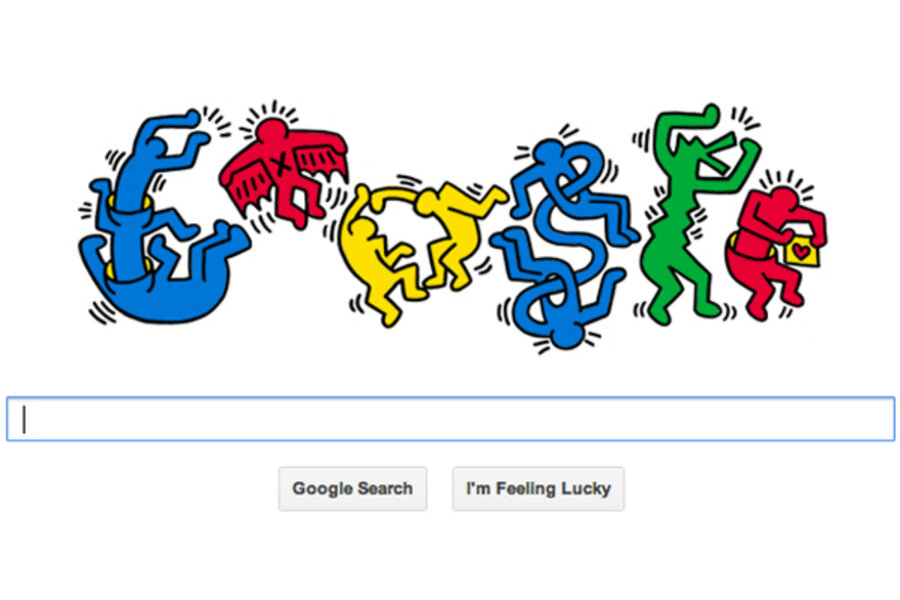Keith Haring: Painter, activist, and one of the original street artists
Loading...
A Google doodle on Friday depicts a carnival of tumbling, colorful dancers and one very happy dog – a nod to the work of the artist and activist Keith Haring, who would have turned 54 this week. Haring, a native of Pennsylvania, moved to New York in 1978, as a young man, and with his trademark sprawling, tessellating, vibrant creations, he quickly made his mark on the art world.
Haring worked in a variety of media: video, canvas, paper. According to his official website, he was greatly influenced by the artists Jean Dubuffet and Pierre Alechinsky and by the writer William Burroughs. But he also seemed to derive a great deal of energy from the music and street art scenes in New York – one of his close friends was Jean-Michel Basquiat, who also helped bring the high-octane splatter of graffiti into the realm of fine art.
Haring "was a graffiti artist with a difference," one critic wrote. "Instead of painting subway cars, he drew with white chalk on the black paper pasted on unused advertising spaces, working in a distinctive style that became widely known before anyone knew the artist's identity. From these beginnings emerged a style of illustration that became known throughout the world and a mode of distribution that largely circumvented the traditional art gallery system."
In his later years, Haring became deeply involved in activism. He contributed artwork to hospitals and charity organizations, and in 1989, the year after he was diagnosed with AIDS, he founded the Keith Haring Foundation, which supports organizations involved in AIDS education and outreach.
Haring died in 1990, at the age of 31. Writing in the New York Times in 2002, critic Robert Smith called Haring "an ambitious talent that was always on the move, making the most of every opportunity." And Haring's influence endures – it is possible to see something of him in modern street artists such as Banksy and Shepard Fairey, who have in many ways claimed his mantle.
Interested in catching a new Haring exhibition? Catch a bus or train or airplane to New York, where the Brooklyn Museum is currently curating a show called Keith Haring: 1978–1982. Brooklyn Museum staff are calling the exhibition – which includes videos, sketchbooks, 155 works on paper, and 150 archival objects – the first large-scale exhibition of Haring's work.
For more tech news, follow us on Twitter @venturenaut.
[Editor's note: The original version of this article misspelled the name of the street artist Banksy.]







